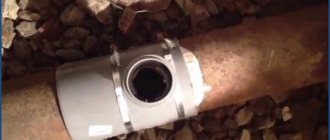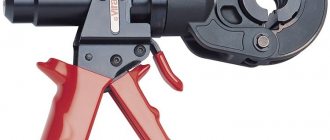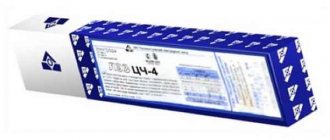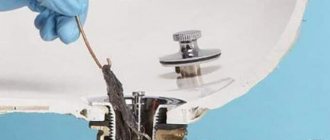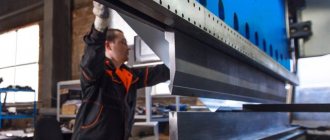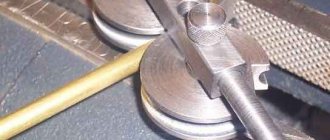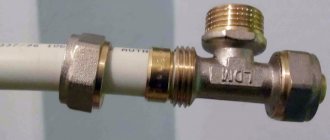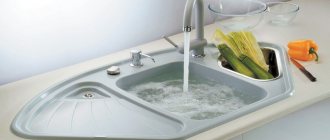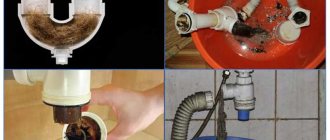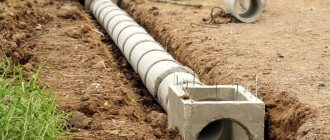- When do you need to straighten HDPE pipes?
- Methods for straightening polyethylene pipes
- Straightening with a forming machine
- How to straighten a HDPE pipe with your own hands
- Features of straightening HDPE pipes
- Alignment errors
One of the common materials used in the manufacture of polymer pipes is low-density polyethylene. This material is available and has a low price. It is used when laying non-pressure sewer networks and pressure water supply systems. Difficulties often arise with straightening such pipes - we will tell you about the most effective methods.
Features of HDPE pipes
HDPE pipes are flexible and durable, light in weight, so they are easy to work with. Main advantages:
- the material is not subject to rotting or corrosion;
- long service life - at least 50 years;
- do not crack at low temperatures;
- are not afraid of fungi and bacteria;
- environmental Safety;
- can be used when installing water supply systems even in seismically active areas;
- have low cost;
- ease of installation;
- several connection methods - detachable and permanent.
Thanks to this, HDPE pipes are quite common in the construction industry, and they are used to create irrigation systems in agriculture, construction of wells, when laying electrical networks and assembling water pipes. They are often used both in industry and in everyday life when laying pipelines. Alas, they are not used for heating and hot water supply - the temperature of the constantly transported liquid through the pipes cannot be more than +40°C. Although the material can withstand temperatures of more than 100°C, already at 80 degrees it begins to gradually soften.
When do you need to straighten HDPE pipes?
There are several ways to straighten a HDPE pipe from a coil, but it is important to know the reason for their deformation. It can occur during transportation in the bay. Often pipes become deformed due to long-term storage under high temperatures - for example, in a bathhouse or under the sun's rays.
Important! Polyethylene, which is in a high temperature zone (80-135 degrees Celsius) or has been heated to this temperature, acquires greater ductility, even in welding areas.
Characteristics of heating equipment
To bend or straighten an HDPE pipe, you must first heat it. It should be borne in mind that excessive exposure to high temperatures can lead to irreversible deformation of the material. Therefore, the equipment used to soften the polymer must have:
- temperature adjustment to control the heating level of the pipe;
- several operating modes;
- air flow adjustment.
Minimum bending radii for polyethylene pipes
By choosing the right equipment, you can carefully give HDPE pipes the desired configuration and do without the use of fittings and couplings.
Transportation of plastic pipes is possible only in the form of coils or sections of specific sizes. When twisted, the building products resemble rings. It is known that improper handling of plastic leads to its deformation or damage. Therefore, it is very important to understand how to straighten a plastic pipe after bending it without compromising the quality of the material.
Methods for straightening polyethylene pipes
Pipes to be transported are wound into coils in the store. Once unwound, they rarely remain straight. Note that the methods for straightening different pipes (HDPE 25, HDPE 35 and HDPE 110) are the same.
The most common methods for straightening a pipe:
- Heating in the sun. Classic heating method. You just need to put the material in the sun and wait until it acquires the desired flexibility.
- Hot water. This solution is an affordable and, most importantly, effective means of bending pipes.
- Construction hairdryer. It is considered a good option because it can quickly heat the pipe to the desired temperature.
- Molding machine. It is used to straighten pipes on an industrial scale. Purchasing such equipment practically for personal use is difficult and not always profitable - only those who often have to straighten pipes will need it.
- Gas-burner. This is a rather dangerous option, since with its help you can not only make the plastic flexible, but also irreversibly damage it.
Alignment errors
- Overheating of the workpiece. When the temperature rises above 107 degrees, the polyethylene begins to melt and can catch fire.
- Insufficient heating of the HDPE. If the inside does not have time to warm up, the polyethylene becomes brittle and can easily burst when leveled.
At the end it is worth summing up. If you have the opportunity to heat low-pressure polyethylene pipes in the sun, then it is better to use it, as this is the most affordable way. But if you need to straighten long pipes or you don’t have the opportunity to use the sun, then you should use a hair dryer.
The most important thing is to follow safety precautions and the degree of heating, then everything will go efficiently and quickly.
Straightening with a forming machine
Using such industrial equipment, you can quickly bend a large number of pipe blanks. This “pipe straightener” allows you to make straight pipes from coils of the required length and shape, which can be freely used in the future.
Important! When straightening with such a machine, a protective frame made of chipboard, fiberboard and other materials with a smooth surface is used, as well as silicone to create a shell.
This procedure is carried out in stages, since high temperatures can ruin the appearance and functionality of the pipe. Work process:
- A frame is created from fiberboard or chipboard according to the dimensions of the pipe.
- A silicone shell is prepared to secure and protect the pipe.
- The pipe is installed in the shell prepared for it, and it is installed in the frame.
- The resulting structure is mounted in a molding machine.
- The device heats up to 90 degrees.
- The pipe in the apparatus is subjected to pressure and straightened.
- After work, you need to turn off the machine, remove the product from the device and wait until it has cooled completely.
Construction hair dryer
The initial stages of this method will also require creating a frame/template from a pressed sheet of fiberboard.
Further steps for bending HDPE pipes differ from the previous ones in that it is necessary:
- Heat the prepared surface with a hair dryer.
- Slowly rotate the tubular product to ensure uniform heating.
- Place the hot blank into the molding frame.
- Bend the pipe so that the material is not damaged at the deformation site. When the appropriate bending angle is reached, cool the product.
- Remove the cold workpiece.
If you decide to use a hair dryer at home, you will have to follow certain rules. First of all, it is important to be very careful when heating the workpiece.
After all:
- If the heat source is located at a considerable distance from its surface, then the HDPE polymer softens slightly and the product is partially deformed.
- Too close proximity to a heat source, incl. open flame can lead to negative effects and even fire of the material.
The procedure for bending HDPE pipes at home is also carried out in a third way - by pouring hot water. But when carrying it out, you need to remember well that this method is only suitable when using small-sized pipes, the diameter of which does not exceed 50 mm. If you need to heat a small section of HDPE pipe, you can use only a few liters of boiling water. To avoid burns, be sure to follow safety regulations. As for industrial production, plastic products are heated with hot liquid in special baths at a temperature of +135˚C.
How to straighten a HDPE pipe with your own hands
When there is neither a hair dryer, nor a gas burner or hot water at hand, HDPE pipes are straightened by placing a heated bulk substance inside them. The method is easy to implement. To do this, you will need to do a number of specific actions:
- Unwind the HDPE pipe from the coil. This can be done with improvised means and/or tools.
- Prepare a mixture of salt or sand in the required condition for work.
- Place in a small bag.
- Place the bag in the oven and set the heating temperature to 100 degrees.
- Remove the bag with the mixture from the oven.
- Fill every meter of pipe with the mixture.
- Wait.
After a certain time, the pipe section becomes more flexible and easier to straighten.
Straightening a pipe under the sun
To straighten a polyethylene pipe, you can simply stretch it, leave it in the sun, and fix the edges. After time, the pipes will straighten themselves, after which they can be laid. Most likely, you will have to wait a long time, but you won’t have to put in any effort.
HDPE leveling using hot water
This method is often used in production. Coils with pipes are immersed in large containers with hot water (80-90°C), left for a while, after which they are taken out and unwound on a flat surface.
This can be done at home, but it is usually used to align water supply pipes of not too long length with a diameter of up to 50 mm. Using a watering can, pour enough hot water into the pipe so that the pipe is filled.
The most effective and affordable methods at home
Using the methods below, it is easy to straighten pipes at home, but there is a high probability of damaging them if you do not perform the steps carefully.
Gas-burner
It is considered the riskiest heating method, since the workpiece can be quickly burned through. In addition, with powerful heating from a burner, the surface of the HDPE pipe can not only become smoky, but also foam.
Careless use of a gas burner can lead to skin burns. For this reason, it should not be used by those who do not have experience in using it. It is recommended to try using a gas torch to straighten the pipe on a small section of it, preferably a separate one.
A hair dryer is the most affordable method at home
The most accessible method of all involves the use of a hair dryer - the principle of its operation is similar to a conventional hair dryer, the only difference is in the heating temperature. First, the uneven pipe needs to be laid out on a flat surface, then heated with a hairdryer and stretched. It is important to leave it to cool for a while.
Important! The melting point of HDPE pipe is 107°C. For this reason, you need to try not to overheat the pipe, otherwise it will become very plastic and bend even more, rather than straighten. And when cooled after overheating, the strength of the pipe will greatly decrease, which will lead to earlier failure.
How to bend plastic at home
Now we will pay special attention to the issues of bending and straightening PVC products. Most craftsmen do not use auxiliary equipment at home. To bend products made of polyvinyl chloride, a sand/salt mass of bulk material is heated in a heat-resistant cabinet. Also, experts, in addition to a hot oven, use a baking sheet. Having heated the bulk mass to a certain temperature, it is poured into the PVC product using a scoop and a construction funnel. It must be remembered that only metal funnels and barrier lids are useful for these purposes.
An important role in solving the problem of how to deform a PVC pipe at home is played by calculating the required temperature of the bulk material. As stated above, it should not be more than +80˚С, because from this point PVC begins to turn into a soft substance. Taking useful information from specialized literature, it is not difficult to understand how to align a HDPE pipe. The most important thing is that the temperature of the bulk product should not exceed or be below the standard limit.
Bending plastic at home includes the following steps:
- Well-heated sand or salt should be poured into a pipe, onto which a barrier cap must be placed on one side in advance.
- After a few minutes, you can begin the bending procedure. The waiting time for a pipe to heat up is directly dependent on the thickness of the PVC pipe walls: thin-walled products heat up much faster than thick-walled ones. This procedure should be performed without much effort.
- After this, the workpiece needs to be cooled by placing it under a cold stream of tap water. Due to the increased heat capacity of sand and salt, the cooling process can last up to 10 minutes.
- Then shake out the bulk substances from the cooled pipe and rinse the internal cavity of the product thoroughly with clean water.
This method is also suitable for bending PVC products at right angles. At the bending point, the cross-section should still be circular.
Please note: cold products made from polyvinyl chloride are completely harmless to humans. But PVC is recognized as a carcinogen, therefore, when working with heated pipes made of this material, it is better to wear a respirator and ventilate the room well.
Naturally, by using the loose mass, you can straighten previously bent polyvinyl chloride products at home. The requirements for performing the procedure are completely simple, so any amateur can figure out how to straighten a polyethylene pipe without the use of auxiliary equipment.
Finally, it is worth recalling that when choosing a method for bending/aligning a pipe, you should give preference to the option that takes into account the degree of pressure of the medium on the plastic pipeline. This is very important because... the deformation process should not negatively affect the technical properties of polyvinyl chloride products and reduce their strength. Ultimately, the reliability of all engineering communications will decrease.
Straightening a HDPE pipe is possible due to the property of the polymer that it can easily change its shape under the influence of high temperature. By heating the product, a certain bending shape is also given, thanks to which you can save on additional parts. This is a relatively cheap and accessible material; pipes made from it are used in pressure water supply systems, as well as in non-pressure sewer networks.
Features of straightening HDPE pipes
The long pipe does not need to be heated completely - you just need to go over the right places with a hairdryer or torch. By leaving the pipe after work for a while, you can maintain strength and increase flexibility.
HDPE pipe is afraid of UV radiation. For this reason, it is better to lay it underground. The pipe is left in the sun only for further straightening.
Important! Outdoors, as a rule, PVC pipes are installed - they are more resistant to UV radiation.
Installation of HDPE pipes does not require soldering. Instead, special clamp fittings must be used. In terms of connection strength, they are not inferior to soldering.
